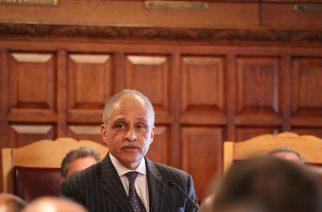 A coalition of lawmakers and higher education advocates are again pushing a bill (S.281A/A.05370) that would require the state to cover all ongoing and mandatory costs of public colleges and SUNY health centers. This legislation identifies the programs and expenditures to be included in the “maintenance of effort” provision for public colleges, guaranteeing and maintaining funding for costs at SUNY and CUNY that are deemed necessary and continuous. This would include operating SUNY’s hospitals, as well as collective bargaining costs such as salary increases and benefits, and other service costs such as utility costs, building rentals and other inflationary expenses incurred by the state university, the City University of New York and state university health centers. A “maintenance of effort” agreement was reached in 2011 when the state passed the SUNY 2020 program to ensure that tuition increases would be spent on new faculty and programs instead of recurring maintenance and operational costs.
A coalition of lawmakers and higher education advocates are again pushing a bill (S.281A/A.05370) that would require the state to cover all ongoing and mandatory costs of public colleges and SUNY health centers. This legislation identifies the programs and expenditures to be included in the “maintenance of effort” provision for public colleges, guaranteeing and maintaining funding for costs at SUNY and CUNY that are deemed necessary and continuous. This would include operating SUNY’s hospitals, as well as collective bargaining costs such as salary increases and benefits, and other service costs such as utility costs, building rentals and other inflationary expenses incurred by the state university, the City University of New York and state university health centers. A “maintenance of effort” agreement was reached in 2011 when the state passed the SUNY 2020 program to ensure that tuition increases would be spent on new faculty and programs instead of recurring maintenance and operational costs.
The bill is being sponsored by Assemblywoman and Deborah Glick, a Manhattan Democrat, and Sen. Kenneth LaValle, a Long Island Republican. Both serve as the chairs for their respective higher education committees.
“Maintenance of effort means not to kill SUNY and CUNY by a thousand budget cuts,” said Barbara Bowen, president of the CUNY Professional Staff Congress, the union that represents more than 25,000 faculty and staff at the City University of New York and the CUNY research foundation.
Lawmakers and higher education advocates, during an event in Albany last week, noted that the state’s economy and budget have rebounded dramatically since the 2008 recession, when public colleges, like many other agencies and programs, suffered serious budget cuts. But SUNY and CUNY still have not been made a top priority, say Glick, LaValle and others who advocate for higher education funding.
“The state once covered 60 percent of SUNY costs, and now only covers 36 percent. This isn’t fair and isn’t right,” said Fredrick Kowal, president of United University Professions, the union representing more than 35,000 members on 29 SUNY campuses.
The bill was passed in the Senate and Assembly last year, but Gov. Andrew Cuomo vetoed it in December 2015, saying funding for higher education is an issue that should be dealt with during budget negotiations and not in a stand-alone bill.
Those in favor of the legislation argue that tuition increases have negatively impacted students, especially low-income students, students of color and students who are recent immigrants.
During a recent budget hearing, SUNY Chancellor Nancy Zimpher noted that, despite the annual tuition increases, SUNY and CUNY remains the most affordable tuition in the Northeast, and among the most affordable in the United States. However, those in favor of the bill see even small tuition increases as an obstacle for today’s students, and hope to see the bill passed by April 1st.
“For some students, $300 can be the difference between going to college, and not going to college,” Bowen said.
At the higher education budget hearing, issues such as professors’ salaries, tuition increases, student diversity and the NYSUNY 2020 program took center stage. Established in 2011, the SUNY 2020 Challenge Grant Program’s is intended to “elevate” SUNY as a catalyst for regional economic development and affordable education, according to the program’s website. SUNY2020 rewards campuses for plans that help spur economic development in their regions by partnering the schools with private enterprise, in most cases.
SUNY 2020 is also intended to establish “maintenance of effort” provisions and a rational tuition program that allows schools, parents and students to anticipate expenses. Some of the goals of SUNY 2020 are to increase enrollment and to support students through on-time completion of their degrees.
Zimpher noted there has been a push to promote diversity, equity and inclusivity on all SUNY and CUNY campuses. Cuomo announced the diversity, equity and inclusivity policy in September 2015. The plan includes a Chief Diversity Officer for every SUNY campus as well as strategic plans to increase diversity among students, faculty and staff.
Three SUNY campus presidents spoke at the Budget Hearing, including UAlbany President Robert Jones; SUNY Potsdam President Kristin Esterberg; and Monroe Community College President Anne Kress. All three emphasized the importance of affordable, quality education as a gateway out of poverty.
“Seventeen percent of our students come from New York City, and 32 percent come from North Country, one of the poorest areas of New York state,” said Esterberg.
President Jones of UAlbany highlighted the success of the Educational Opportunity Program, which is currently offered on 43 of the 64 SUNY campuses. EOP is designed for students who need special academic assistance and financial aid.
“I cannot overstate the importance of this program, which has been recognized as a national model,” Jones said.









